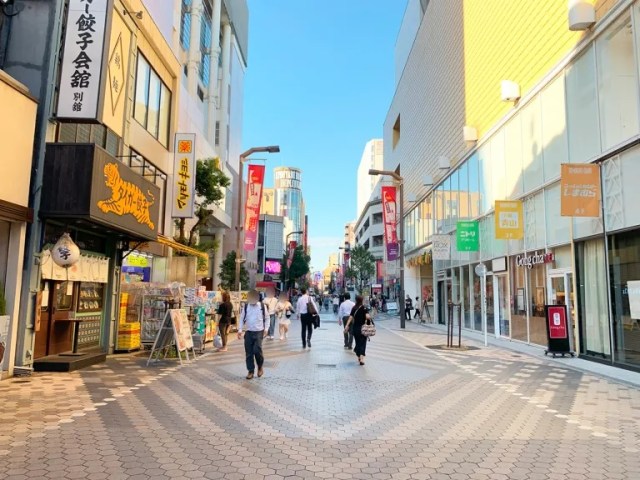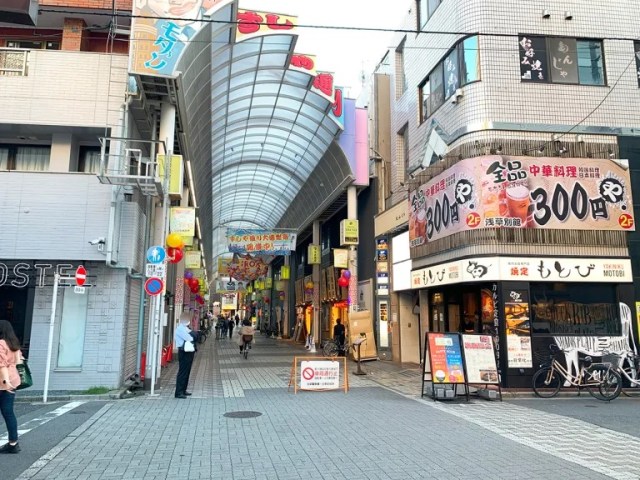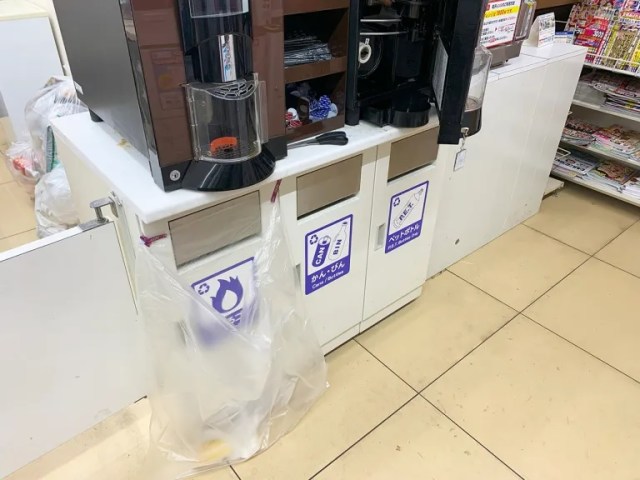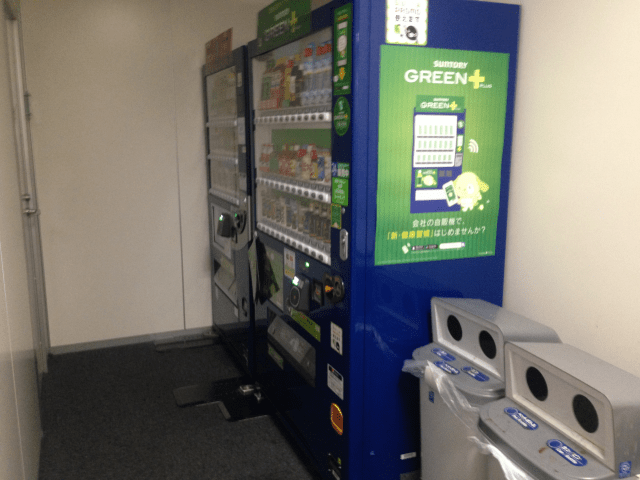
Why aren’t Japanese locals more bothered about this common complaint from overseas visitors?
Our Japanese-language reporter Seiji Nakazawa is always keen to hear what overseas visitors to Japan think of his home country, and so even when he doesn’t have a chance to talk with them directly, he like to look online to see what they have to say. Recently, he came across a common complaint from the international travel community: Japanese cities don’t have enough trash cans.
This isn’t something that exclusively irks tourists. Though you’ll see very few trash cans while out and about in Japan, they used to be more common. Though receptacles on street corners have never been all that prevalent, when Seiji was still a kid in Osaka you used to be able to reliably find trash cans throughout Japanese train and subway stations, and even he sometimes finds himself missing that convenience.
So when, and why, did station trash cans start becoming hard to find? Seiji has heard theories that many were removed in reaction to the sarin gas attacks on the Tokyo subway in 1995, which would mesh with his timeline of them becoming less common sometime between his childhood and when he became a young adult However, trash cans still weren’t all that hard to find on station platforms in Tokyo even in the early 2000s, but a new round of removals in Japan’s capital followed the Madrid train terrorist bombings in 2004.
Even this wasn’t a clean sweep, though. Instead, it’s been a sustained but gradual disappearance of station trash cans, with the same happening for on-the-street containers, bringing us to the current conditions where they’ve become rarities.
Seiji can see how this might feel like a tremendous inconvenience. He’s seen online comments from overseas travelers calling the relative lack of public trash cans in Japan “a stupid decision” and “a reason for people to litter,” and he can sympathize how it can feel like a hassle to get off an international flight and suddenly have to transition from your home country where trash cans are common to a society where they’re definitely not.
And yet, as someone living in Japan, he doesn’t feel like the lack of trash cans really causes him, or most residents, all that many problems. The major reason why is that while it can be hard to find trash cans in Japan, you usually can find them in places that are likely to generate trash.
Convenience stores and supermarkets pretty much always have trash cans. If you buy a cup of instant ramen, pack of melon bread, or some other item and consume it either in front of the store of inside its eat-in area, the store sees it as its responsibility to give you a place to throw away your trash. Likewise, at sports venues, concerts, outdoor festivals, and other events where vendors are selling food and drinks from stalls, the organizers set up trash cans too. No one is expecting you to haul your trash all the way home from the Tokyo Game Show food court, for example.
Adding in my own observations, the no-trash-cans, no-problem attitude of many Japanese people is also tied into Japanese eating etiquette. It’s generally considered poor manners to eat while walking or riding the train, so the vast majority of Japanese people will wait until they’re back at their home, office, or hotel to eat any takeout food they’ve picked up, and once they’re at one of those places, they don’t need a public trash can.
Drinking a beverage while on the move is usually acceptable, but in this case Japan’s ubiquitous vending machines come to the rescue. Similar to convenience stores, vending machines are trash generators, so most operators also set up a can/bottle recycling box next to their machine, and you’re never all that far from a vending machine in a Japanese city. The general attitude is that it’s OK to throw away a container from a drink you bought at one machine in another machine’s recycling box. Dumping in a bunch of empty cans you brought from home is a no-no, but for a single incidental can here and there, the logic seems to be that the deposits will all more or less balance out.
Another factor that can’t be ignored is the fact that pretty much everyone in Japan, men and women, young and old, carries a bag of some sort when they go out, whether a purse, backpack, messenger bag, or some other style. Since they’re carrying these as part of their daily routine, most people pick a bag that’s large enough to carry their essentials without being stuffed to bursting, which leaves them with enough space to put a candy wrapper, empty drink bottle, or whatever other incidental trash they’ve accumulated until either they do eventually come across a trash can or they’re back home for the day. That does still leave the potential problem of what to do with sticky or otherwise dirty trash that you don’t want soiling the inside of your bag. For most Japanese people, though, this isn’t an issue, going back to the idea that you shouldn’t be walking around eating messy foodstuffs in the first place.
All that said, if you’re not adhering 100-percent to local customs, you might find yourself with something like a sauce-stained takoyaki tray or sweet bean paste-smeared taiyaki wrapper from a snacking-while-walking session. Having succumbed to such temptations myself, I’ve gotten in the habit of always keeping a few plastic sandwich bags inside my bag when I’m going out. They weigh practically nothing and take up a negligible amount of space, and if you’re visiting from overseas and forgot to pack some, you can buy them, cheaply, in just about any convenience store or 100 yen shop. Any dirty trash I end up with when there’s no trash can around gets put into a sandwich bag, tied shut, and tossed into my bag to take home.
I’ll admit it’s a hassle, but it’s a very, very tiny hassle, and totally worth it to solve one of the most common complaints about traveling in Japan.
Photos ©SoraNews24
● Want to hear about SoraNews24’s latest articles as soon as they’re published? Follow us on Facebook and Twitter!
[ Read in Japanese ]




 Why do Japanese recycle bins have two openings but dump everything into the same compartment?
Why do Japanese recycle bins have two openings but dump everything into the same compartment? Titan trash can to be placed near a Coca-Cola vending machine in Oita to help promote recycling
Titan trash can to be placed near a Coca-Cola vending machine in Oita to help promote recycling Sayonara, trash cans – Tokyo to remove last receptacles next month
Sayonara, trash cans – Tokyo to remove last receptacles next month “Recycling in Japan” or “Reasons to get it right and avoid eternal shame”
“Recycling in Japan” or “Reasons to get it right and avoid eternal shame” Japanese company designs fashionable pouch to keep scraps of trash in
Japanese company designs fashionable pouch to keep scraps of trash in Foreigner’s request for help in Tokyo makes us sad for the state of society
Foreigner’s request for help in Tokyo makes us sad for the state of society Japanese-style accommodation at the new Premium Dormy Inn hotel in Asakusa will blow your mind
Japanese-style accommodation at the new Premium Dormy Inn hotel in Asakusa will blow your mind Ghibli Park now selling “Grilled Frogs” from food cart in Valley of Witches
Ghibli Park now selling “Grilled Frogs” from food cart in Valley of Witches Seaside scenery, history, and so many desserts on Yokohama’s Akai Kutsu【Japan Loop Buses】
Seaside scenery, history, and so many desserts on Yokohama’s Akai Kutsu【Japan Loop Buses】 All-you-can-drink Starbucks and amazing views part of Tokyo’s new 170 meter-high sky lounge
All-you-can-drink Starbucks and amazing views part of Tokyo’s new 170 meter-high sky lounge Smash Bros. director Sakurai stabs Kirby in the face, has delicious justification for it
Smash Bros. director Sakurai stabs Kirby in the face, has delicious justification for it New virgin-seducing lingerie collection from Japan throws virtue out the window【Photos】
New virgin-seducing lingerie collection from Japan throws virtue out the window【Photos】 Gorgeous Chinese woman creates one of Japan’s favorite mobile games, encourages microtransactions
Gorgeous Chinese woman creates one of Japan’s favorite mobile games, encourages microtransactions Akihabara pop-up shop sells goods made by Japanese prison inmates
Akihabara pop-up shop sells goods made by Japanese prison inmates Top 27 ugliest album covers from Yugoslavia 【Photos】
Top 27 ugliest album covers from Yugoslavia 【Photos】 McDonald’s new Happy Meals offer up cute and practical Sanrio lifestyle goods
McDonald’s new Happy Meals offer up cute and practical Sanrio lifestyle goods Japanese ramen restaurants under pressure from new yen banknotes
Japanese ramen restaurants under pressure from new yen banknotes French Fries Bread in Tokyo’s Shibuya becomes a hit on social media
French Fries Bread in Tokyo’s Shibuya becomes a hit on social media Red light district sushi restaurant in Tokyo shows us just how wrong we were about it
Red light district sushi restaurant in Tokyo shows us just how wrong we were about it New private rooms on Tokaido Shinkansen change the way we travel from Tokyo to Kyoto
New private rooms on Tokaido Shinkansen change the way we travel from Tokyo to Kyoto Tokyo Tsukiji fish market site to be redeveloped with 50,000-seat stadium, hotel, shopping center
Tokyo Tsukiji fish market site to be redeveloped with 50,000-seat stadium, hotel, shopping center Japanese city loses residents’ personal data, which was on paper being transported on a windy day
Japanese city loses residents’ personal data, which was on paper being transported on a windy day Beautiful Ghibli sealing wax kits let you create accessories and elegant letter decorations【Pics】
Beautiful Ghibli sealing wax kits let you create accessories and elegant letter decorations【Pics】 Secret Kitchen bento serves Japanese flowers, birds, wind and moon in a box, but is it worth it?
Secret Kitchen bento serves Japanese flowers, birds, wind and moon in a box, but is it worth it? New definition of “Japanese whiskey” goes into effect to prevent fakes from fooling overseas buyers
New definition of “Japanese whiskey” goes into effect to prevent fakes from fooling overseas buyers Our Japanese reporter visits Costco in the U.S., finds super American and very Japanese things
Our Japanese reporter visits Costco in the U.S., finds super American and very Japanese things Studio Ghibli releases Kiki’s Delivery Service chocolate cake pouches in Japan
Studio Ghibli releases Kiki’s Delivery Service chocolate cake pouches in Japan More foreign tourists than ever before in history visited Japan last month
More foreign tourists than ever before in history visited Japan last month New Pokémon cakes let you eat your way through Pikachu and all the Eevee evolutions
New Pokémon cakes let you eat your way through Pikachu and all the Eevee evolutions Disney princesses get official manga makeovers for Manga Princess Cafe opening in Tokyo
Disney princesses get official manga makeovers for Manga Princess Cafe opening in Tokyo Sales of Japan’s most convenient train ticket/shopping payment cards suspended indefinitely
Sales of Japan’s most convenient train ticket/shopping payment cards suspended indefinitely Sold-out Studio Ghibli desktop humidifiers are back so Totoro can help you through the dry season
Sold-out Studio Ghibli desktop humidifiers are back so Totoro can help you through the dry season Japanese government to make first change to romanization spelling rules since the 1950s
Japanese government to make first change to romanization spelling rules since the 1950s Ghibli founders Toshio Suzuki and Hayao Miyazaki contribute to Japanese whisky Totoro label design
Ghibli founders Toshio Suzuki and Hayao Miyazaki contribute to Japanese whisky Totoro label design Doraemon found buried at sea as scene from 1993 anime becomes real life【Photos】
Doraemon found buried at sea as scene from 1993 anime becomes real life【Photos】 Tokyo’s most famous Starbucks is closed
Tokyo’s most famous Starbucks is closed One Piece characters’ nationalities revealed, but fans have mixed opinions
One Piece characters’ nationalities revealed, but fans have mixed opinions We asked a Uniqlo employee what four things we should buy and their suggestions didn’t disappoint
We asked a Uniqlo employee what four things we should buy and their suggestions didn’t disappoint Sumida River Fireworks Festival aftermath: Not everyone in Japan has perfect manners after all
Sumida River Fireworks Festival aftermath: Not everyone in Japan has perfect manners after all Japanese otaku now have special trash box just for merch of their former anime and idol crushes
Japanese otaku now have special trash box just for merch of their former anime and idol crushes How much trash is in Village Vanguard’s 2022 Lucky Bags? We bought 7 to find out
How much trash is in Village Vanguard’s 2022 Lucky Bags? We bought 7 to find out The Japanese art of making trash containers from old papers
The Japanese art of making trash containers from old papers Japanese vending machine trash cans come to life in cute Tokyo photo collection
Japanese vending machine trash cans come to life in cute Tokyo photo collection Japanese city changes “burnable trash” bags to “the only option is to burn this trash” bags
Japanese city changes “burnable trash” bags to “the only option is to burn this trash” bags Six ways to avoid looking like an “idiot” when shopping at Japanese convenience stores
Six ways to avoid looking like an “idiot” when shopping at Japanese convenience stores Jack-‘o-lantern trash bags being handed out to fight litter during Tokyo Halloween parties
Jack-‘o-lantern trash bags being handed out to fight litter during Tokyo Halloween parties We hope you’re not thirsty — Tokyo shuts down its vending machines for U.S. president’s visit
We hope you’re not thirsty — Tokyo shuts down its vending machines for U.S. president’s visit Kyoto village dealing with poo on floor as Japanese-style toilets confuse foreign travelers
Kyoto village dealing with poo on floor as Japanese-style toilets confuse foreign travelers Divine prevention – Japan using Shinto symbols to combat litter and public peeing
Divine prevention – Japan using Shinto symbols to combat litter and public peeing How to dispose of pizza boxes: Life hack from Japanese garbage man goes viral online 【Video】
How to dispose of pizza boxes: Life hack from Japanese garbage man goes viral online 【Video】 Ramen manners debate: Should you put your used napkins into your bowl after you eat?
Ramen manners debate: Should you put your used napkins into your bowl after you eat? Coca-Cola’s green tea cubes are an awesome new way to make Japan’s favorite drink【Photos】
Coca-Cola’s green tea cubes are an awesome new way to make Japan’s favorite drink【Photos】 Kyoto’s newest anime mascot has a stinky name, is worried about garbage, and is a fairy
Kyoto’s newest anime mascot has a stinky name, is worried about garbage, and is a fairy Japan’s secret garbage problem–and what you can do to help
Japan’s secret garbage problem–and what you can do to help
Leave a Reply